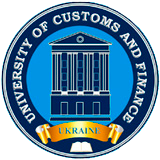SPATIAL MODELS OF THE THEORY OF OPTIMAL DIVISION OF SETS’ CONTINUOUS PROBLEMS
Abstract
The paper investigates the problems of optimal partitioning of a section of a spatial curve, which are special cases of a continuous Optimal Partitioning Sets (OPS) problem with the determination of location of the centers of subsets. New formulations of OPS problems for special cases are proposed. Each problem is a generalization of the previous one. The cost function is interpreted as the geometric characteristic of the curve. The effect of curvature and torsion on the cost of movement is considered. In fact, a new metric is introduced for this class of problems. It is shown that in such formulations it is possible to integrate the objective function and obtain a problem of the classical form. The overall result of the studies carried out in this work can be formulated as taking into account during the motion not only the length of the trajectory, but also the cost of maneuvering along this trajectory in the framework of the OPS problem with obtaining the placement of centers. Taking into account the geometric characteristics transfers the described OPS problem to the applied field. Modern requirements for the goods transfer require taking into account the maximum number of factors affecting the process, which means that data and dependencies are required within the process itself. In this case, it is the geometry of the trajectories; the next step is the physics of the process, interaction with the road or airspace.
References
2. E.M. Kiseleva, L.I. Lozovskaya, E.V. Timoshenko. Resheniye nepreryvnykh zadach optimal'nogo pokrytiya sharami s ispol'zovaniyem teorii optimal'nogo razbiyeniya mnozhestv. [Solution of continuous problems of optimal covering by balls using the theory of optimal partitioning of sets] Kibernetika i sistemnyy analiz. [Cybernetics and Systems Analysis]. 2009.vol. 3. pp.98–117. [Ukraine].
3. E. M. Kiseleva, L. S. Koryashkina, T. A. Shevchenko. O reshenii dinamicheskoy zadachi optimal'nogo razbiyeniya mnozhestv s razmeshcheniyem tsentrov podmnozhestv [On the solution of the dynamic problem of optimal parti-tioning of sets with the location of centers of subsets]. Kibernetika i sistemnyy analiz. [Cybernetics and Systems Analysis]. 2014. vol. 6. pp. 29–40. [Ukraine].
4. T. Shevchenko, E. Kiseleva, L. Koriashkina. The features of solving of the set partitioning problems with moving boundaries between subsets. Operations Research Proceedings 2008. Springer-Verlag Berlin Heidelberg 2009. pp. 533–538.
5. L. S. Koryashkína, T. O. Shevchenko. Novi pidkhody do rozvʺyazannya dynamichnoyi zadachi optymalʹnoho rozbyttya mnozhyn [New approaches to solving the dynamic problem of optimal partitioning]. Pytannya prykladnoyi matematyky i matematychnoho modelyuvannya [Questions of applied mathemat-ics and mathematical modeling]. 2009. pp. 220–231. [Ukraine].
6. E.M.Kiseleva, L.S.Koryashkina. Nepreryvnyye zadachi optimal'nogo razbiyeniya mnozhestv i r-algoritmy [Continuous problems of optimal set partitioning and r-algorithms]. Kyiv. Naukova Dumka, 2015. 400p. [Ukraine].
7. Bakolas E., Tsiotras P. The Zermelo. Voronoi diagram: a dynamic parti-tion problem. Automatica. 2010. vol.12. pp. 2059–2067.
8. Balzer M. Capacity-constrained Voronoi diagrams in continuous spaces. The International Symposium on Voronoi Diagrams in Science and Engineering. 2009. 10р.
9. Jooyandeh Mohammadreza, Mohades Ali, Mirzakhah Maryam. Uncertain Voronoi diagram. Information Processing Letters. 2009. vol. 109, N13. pp.709–712.
10. Kiseleva E.M., Koriashkina L.S. Theory of Continuous Optimal set Par-titioning Problems as a Universal Mathematical Formalism for Constructing Voro-noi Diagrams and Their Generalizations./ Cybernetics and Systems Analysis, 2015. рp. 325–335.
11. Guruprasad K. R. Effectiveness-based Voronoi partition: a new tool for solving a class of location optimization problems. Optimization Letters. 2013. Vol. 7. Pp. 1733–1743.
12. Xibin Zhao, Hehua Zhang, Yu Jiang, Songzheng Song, Xun Jiao, and Ming Gu. An Effective Heuristic-Based Approach for Partitioning. Journal of Applied Mathematics. Volume 2013 (2013), Article ID 138037, 8 pages.
13. Firsov A. Study of the mathematical models of optimal partitioning for particular cases. Eastern-European Journal of Enterprise Technologies: Control processes, 2018 4(91). Vol 1. 69-76 DOI: 10.15587/1729-4061.2018.123261.
14. Koriashkina L., Saveliev V., Zhelo A. On Mathematical Models of Some Optimization Problems Arising in the Production of Autoclaved Aerated Con-crete. Advanced Engineering Forum. 2017. Pp.173–181.
15. Lau B., Sprunk C., Burgard W. Efficient grid-based spatial representa-tions for robot navigation in dynamic environments. Robotics and Autonomous Systems. 2013. 61, Vol. 10. Pp. 1116–1130.
16. Us S., Stanina O. The Methods and Algorithms for Solving Multi-stage Location-allocation Problem. Power Engineering and Information Technologies in Technical Objects Control: 2016. Annual Proceedings CRC Press. 2017.

 ISSN
ISSN 




